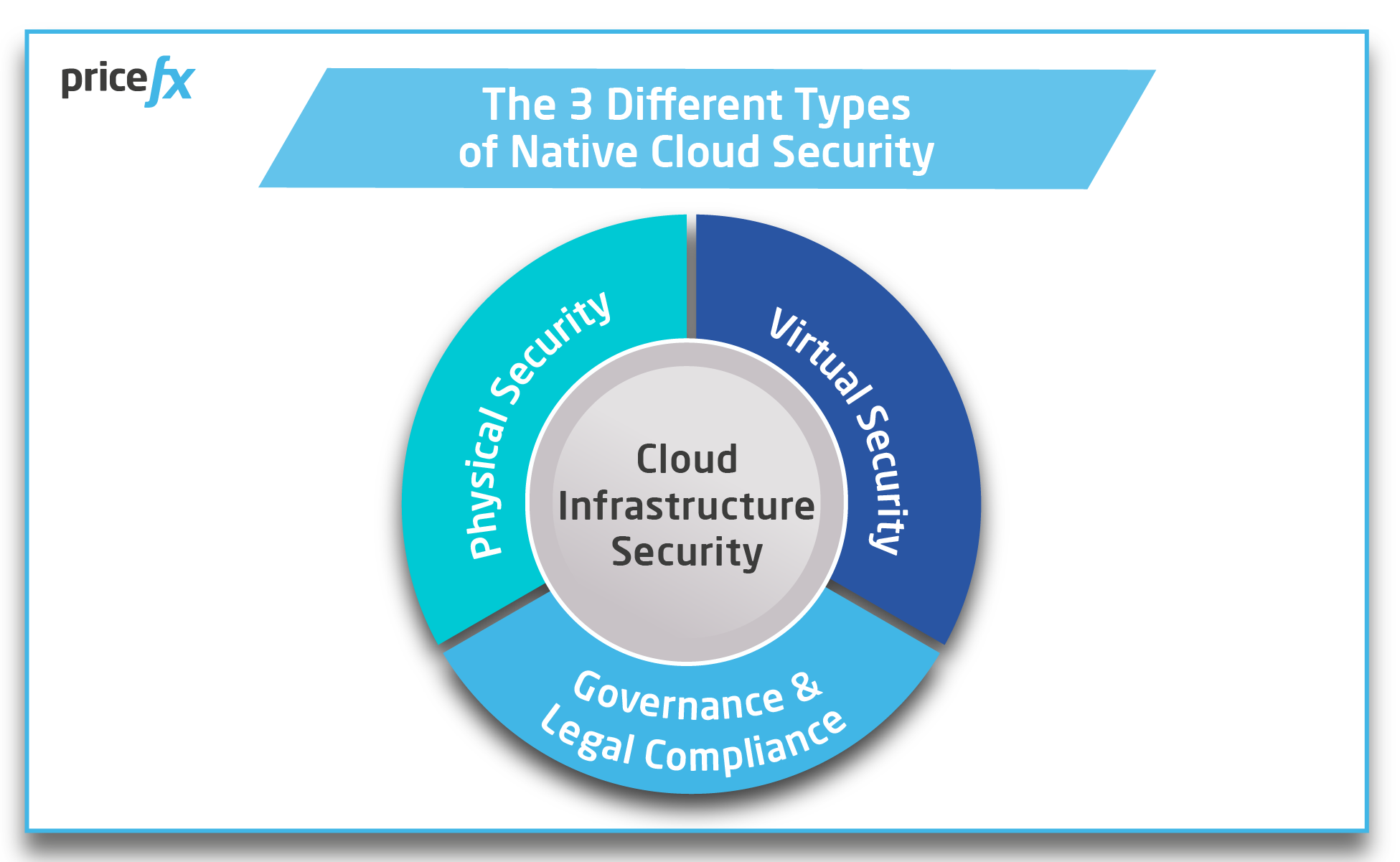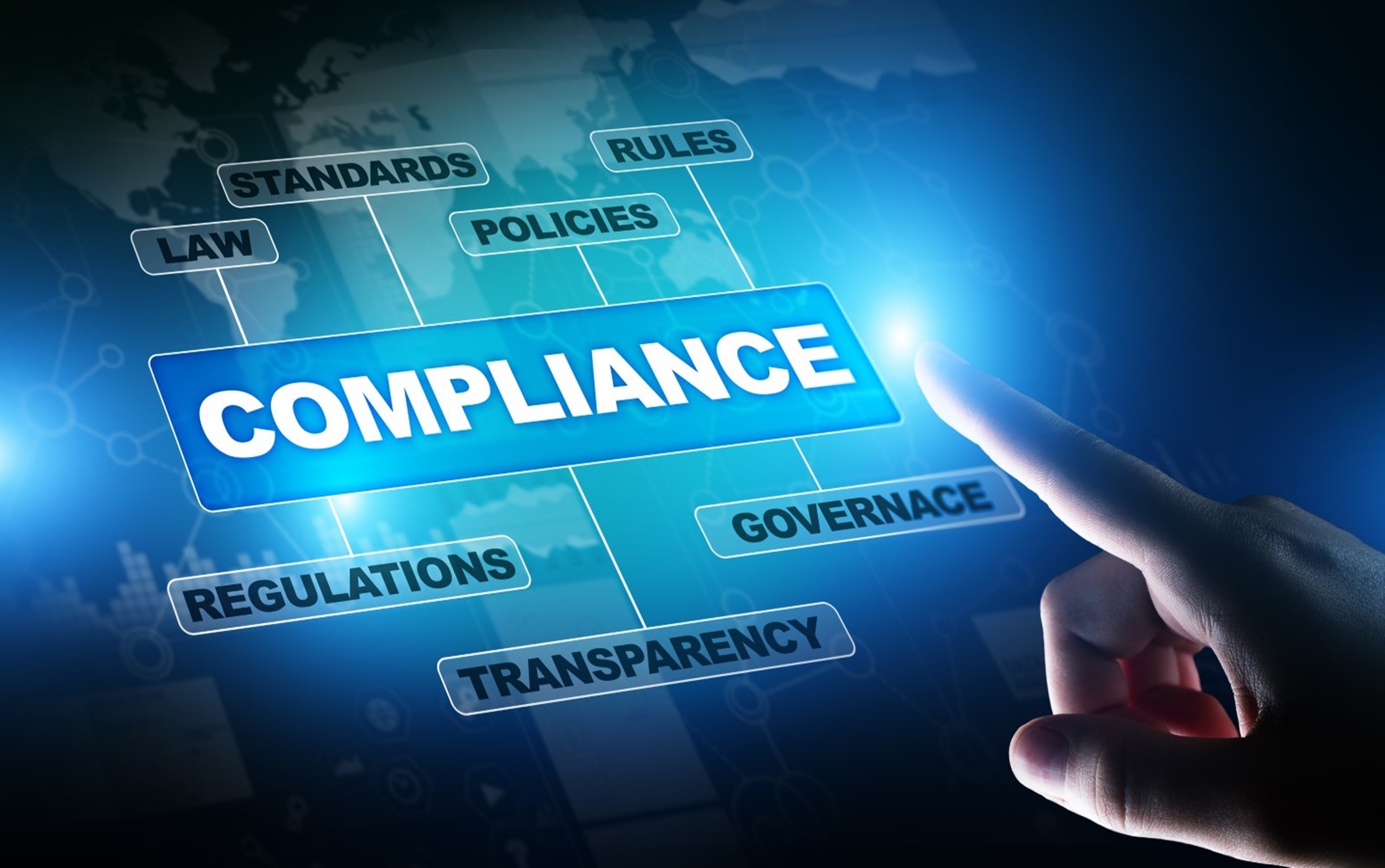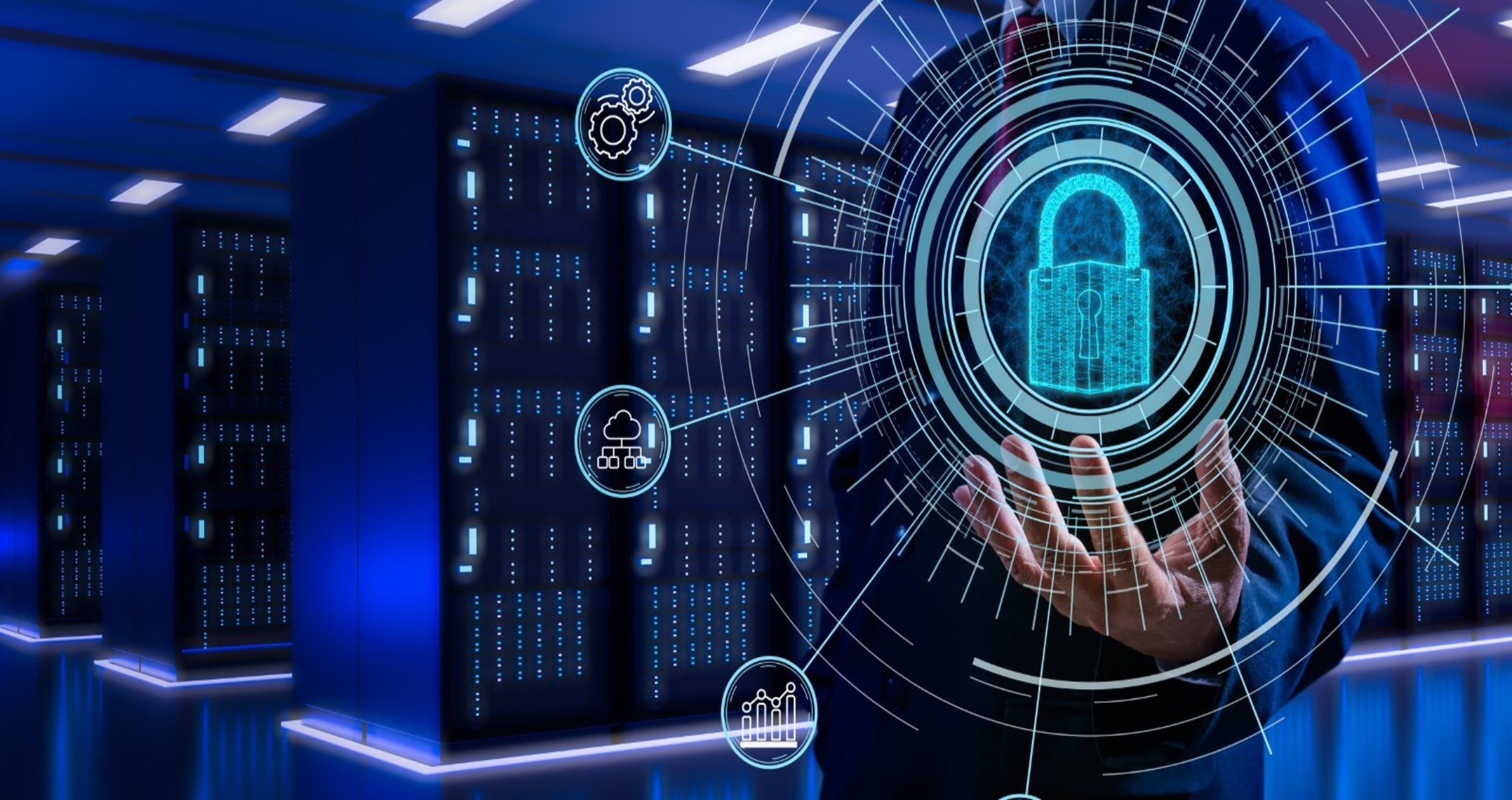Is Cloud Infrastructure Really Safe? Yes & Here is Why
April 13th, 2022 (Updated 03/10/2023) | 11 min. read
Because of its prevalence, most people with even a mere passing interest in technology already know what cloud infrastructure is, but for the uninitiated and explained simply, the cloud allows an internet user to access a third-party computing resource (just like our own Pricefx pricing software). The cloud is ‘located in’ an almost endless network of interconnected servers that allow you to run your computer’s applications over the internet without having to buy, install or manage your own servers. But we hear the inevitable question almost every day from new and would-be customers – ‘given my servers are now going to be located off-site – is the cloud safe?’ The answer is a resounding yes, and we will explain why in this article.
Native Cloud pricing software vendors like Pricefx have embraced superior security standards and technologies into their security infrastructures that are often well beyond the affordability of most companies, making it safer to do business in the Cloud than on your own servers.
So, let’s dig in and analyze cloud security measures, its benefits and how working with native cloud provides security and peace of mind rather than concerns.
The 3 Different Types of Security for Native Cloud Pricing Software
In the good old days, if you wanted to secure your own on-premises pricing software, you simply put your servers in a secure room under lock-and-key, perhaps installed a couple of cameras and even an alarm and/or motion sensor to keep track on any intruders.
That is physical security and believe it or not, there’s still physical security involved in keeping cloud infrastructure safe. However, these days physical security goes hand-in-hand with virtual security measures, that protect from the strongest reoccurring threats that come from different types of cyber-attacks. Despite the much greater risk of cyber-attack, both physical and virtual security work together to protect the cloud infrastructure.
The third type of cloud security is Governance and Legal Compliance that revolves around protecting user privacy as set by legislative bodies. Governments have taken up the importance of protecting private user information. As such, organizations must follow regulations to abide by these policies at an international level in addition to laws that also apply inside their individual jurisdictions of operation.

Regardless of which type of security you’re discussing, the overwhelming contributing factor to the strength of the security is how much energy, time, and money you spend on making it secure.
In other words, it is entirely up to you.
Your native cloud pricing software system will be precisely as secure as you want it to be.
1. Physical Security for Native Cloud Pricing Software

It is worthwhile remembering that even with native cloud software, the system is running on collection of physical servers in some data center farm like those located in data-rich locations like Northern Virginia, Chicago, Portugal, Dublin, Munich, Frankfurt, or Northern New Jersey. Naturally, those data centers are required to be secure locations. Basically, they are simply purpose-built buildings hosting a collection of machines. Given data security is their business, these buildings tend to have a lot more physical security controls and devices and measures in place than your average on-premises data center based in a corporate basement, or down the hall from your office.
Data center locations for cloud infrastructure are generally secured against climatic factors like floods, fires and other weather-related dangers like hurricanes and extreme hailstorms. Data center engineers and architects are also keen to avoid low-lying flood-prone locations and hot geological zones prone to earthquake. Sometimes, data centers built in populated areas are even ‘camouflaged’ and purpose-built to blend in with the surroundings, in addition to the more traditional measures of security guards, cameras etc.
Other Key Data Center Physical Security Measures
However, aside from the location, there are many other physical security considerations. Data center security can also include:
- Reinforced concrete walls and structures that can protect the facility from external attacks.
- A personal badge or a coded pin pad security system to allow only certain people with access to the data center.
- Server cabinets and cages that are bolted into the ground and secured with locks, and;
- Environmental controls that monitor and regulate temperature and humidity changes.
2. Virtual Security for Native Cloud Pricing Software
In addition to the functionality of the pricing software that your native cloud provider is supplying your business, part of the service that you are paying for is the virtual security of the cloud infrastructure. Depending on your native cloud pricing software provider, they may employ a range of virtual security methods;
- Data security is an aspect of cloud security that involves the technical end of threat prevention. Tools and technologies allow providers and clients to insert virtual barriers between the access and visibility of sensitive data. Of these, encryption is one of the most powerful tools available. Encryption scrambles your data so that it is only readable by someone who has the encryption key. If your data is lost or stolen, it will be effectively unreadable and meaningless.
- Identity and access management (IAM) pertains to the accessibility gateways offered to user accounts at a business or personal level. Managing authentication and authorization of user accounts are critical to the system’s safety. Access controls are pivotal to restricting users — both malicious and legitimate users — from entering and compromising sensitive data and systems. Password management, multi-factor authentication, and other methods fall under the scope of IAM.
- Built-in firewalls – Cloud infrastructure like on-premises systems rely on firewalls to help protect your files. As the name suggests, this technology acts a bit like a wall keeping your data safe. Firewalls apply rules to all the traffic coming into the cloud network. These rules are designed to filter out suspicious traffic and to keep data protected behind the ‘wall.’ Consequently, it becomes more difficult for hackers to slip viruses, malware, or ransomware past the security of your native cloud pricing software service provider.
- Redundancy – Will enable you to access your data, network and computational functionality if your native cloud pricing software provider suffers hardware failures due to a natural disaster or large-scale power outage. In terms of your data, your pricing software provider copies your data several times and stores it at a range of different data centers. Redundancy ensures that if one server should happen to go down, you will still be able to access your data from a back-up server, not to mention getting your network up-and-running quickly.
- Third-party external security testing – Your native cloud pricing software provider should also hire an external security company to test their servers and software periodically to ensure they are safe from hackers, cybercriminals and the latest malware and viruses. Most native cloud pricing software providers will undertake external testing at the time of every new release of their software (which can be as multiple times a year) in addition to other external testing that may be undertaken by your fellow customers. The external testing boosts the odds that your native cloud pricing software provider will have the defenses in place required to keep data security intact.
3. Governance and Legal Compliance in Native Cloud Pricing Software

All native cloud pricing software vendors do as much as possible to be able to provide secure cloud infrastructure and service. In most cases, native cloud providers employ independent auditors to perform a range of control tests that are focused on internal control environment, processes, and security management (particularly for correct access management – which is the most important security area for a native cloud pricing software provider).
All native cloud pricing software vendors will have their own set of internal procedures that all their employees and contractors must follow, including in-house IT Policies and Procedures and Security and Data Protection Policy.
Be sure to check with your native cloud pricing software provider how they comply with government and industry regulations and how your cloud pricing software vendor supports cross-border investigations.
All native cloud pricing software vendors should happily provide their ISO certificates, SOC 1, and SOC 2 certification reports to you upon request (see explained below).
- Service Organization Control 1 Type 2 (SOC 1 Type 2 )– Covering your pricing software provider’s global operations, this certification focuses on the organization’s control over financial reporting. Usually conducted annually, the SOC 1 Type 2 certification ensures that the company’s operations controls are defined, implemented, and fully functioning through testing.
- Service Organization Control 2 Type 1 (SOC 2 Type 1) – Another globally recognized certification focusing on service organizations’ controls over security, availability, processing integrity, confidentiality, and privacy. SOC 2 Type 1 ensures that operational controls are defined by the company.
- Service Organization Control 2 Type 2 (SOC 2 Type 2) – This global certification covers off on security, availability, processing integrity, confidentiality, and privacy, and that within the company itself, they are defined, implemented, and fully functioning through testing.
- International Organization for Standardization, Standard 27001(ISO 27001) – The primary focus is on information security topics within your pricing software provider. Ensures that the processes dedicated to information security are well designed and followed by the personnel of your provider. Just like ISO 9001, the ISO 27001 certification is also valid for 3 years and subject to an annual surveillance audit.
Other Non-Security Related Certifications
Quality Management of the Entire Cloud Infrastructure Environment
For organizations asking how to improve the quality of their products and services and consistently meet their overall customers’ expectations (including security as merely one part of a range of other services), the following certification applies;
- International Organization for Standardization, Standard 9001 (ISO 9001) – Focuses on the established processes in the native pricing software provider and that the goods and services delivered are provided are of a consistent quality. This certification lasts 3 years but is subject to an annual surveillance audit.
General Data Protection Regulation (GDPR) and Personal Data Protection
Legislation has been put in place to help protect end users from the sale and sharing of their sensitive data. General Data Protection Regulation (GDPR) applies to any organization operating within the European Union (EU), as well as any organizations outside of the EU which offer goods or services to customers or businesses in the EU. That ultimately means that almost every major corporation in the world needs a GDPR strategy.
Data breaches inevitably happen. Information gets lost, stolen or otherwise released into the hands of people who were never intended to see it – and those people often have malicious intent. It is worthwhile to note that the probability of a security breach is independent of whether your pricing software is either cloud-hosted or an on-premises solution.
Under the terms of GDPR, not only do organizations have to ensure that personal data is gathered legally and under strict conditions, but those who collect and manage it (including your native cloud pricing software provider) are obliged to protect it from misuse and exploitation, as well as to respect the rights of data owners – or face penalties for not doing so.
Why is Cloud Security so Robust?
As we promised you at the beginning of this article, we will tell you why cloud infrastructure is really safe. And it is, as you can tell from the extensive list of security measures we have outlined above.
How did that happen? Well, because it had to.
For years before the cloud came about, people naturally assumed that their on-premises servers were safe sitting in the corner of the room or in the company’s basement. The servers were right there with the employees, under the physical control and protection of the business.
Because servers were in the past physical things that you or anybody in your company could touch, that personal feeling implied great security. Now in the virtual world where cloud infrastructure is a little more fluffy, foggy, and esoteric, a level of security needed to be created that matched the feeling of ‘I can touch it’ personal security.
The result? Such was the concern of the pioneers of the virtual world of the cloud, the security systems put in place are arguably now more strident than physical security ever was. So much so, now physical data center security specialists are playing catch-up to match their physical security measures with virtual protection measures.
Being a native cloud pricing software provider, Pricefx is proud of its roots as a Next-Generation player. We would like to share more of the Benefits of True Cloud Native Pricing Software with you as you continue your learning journey. Click on the link below to learn more our recent blog article.

